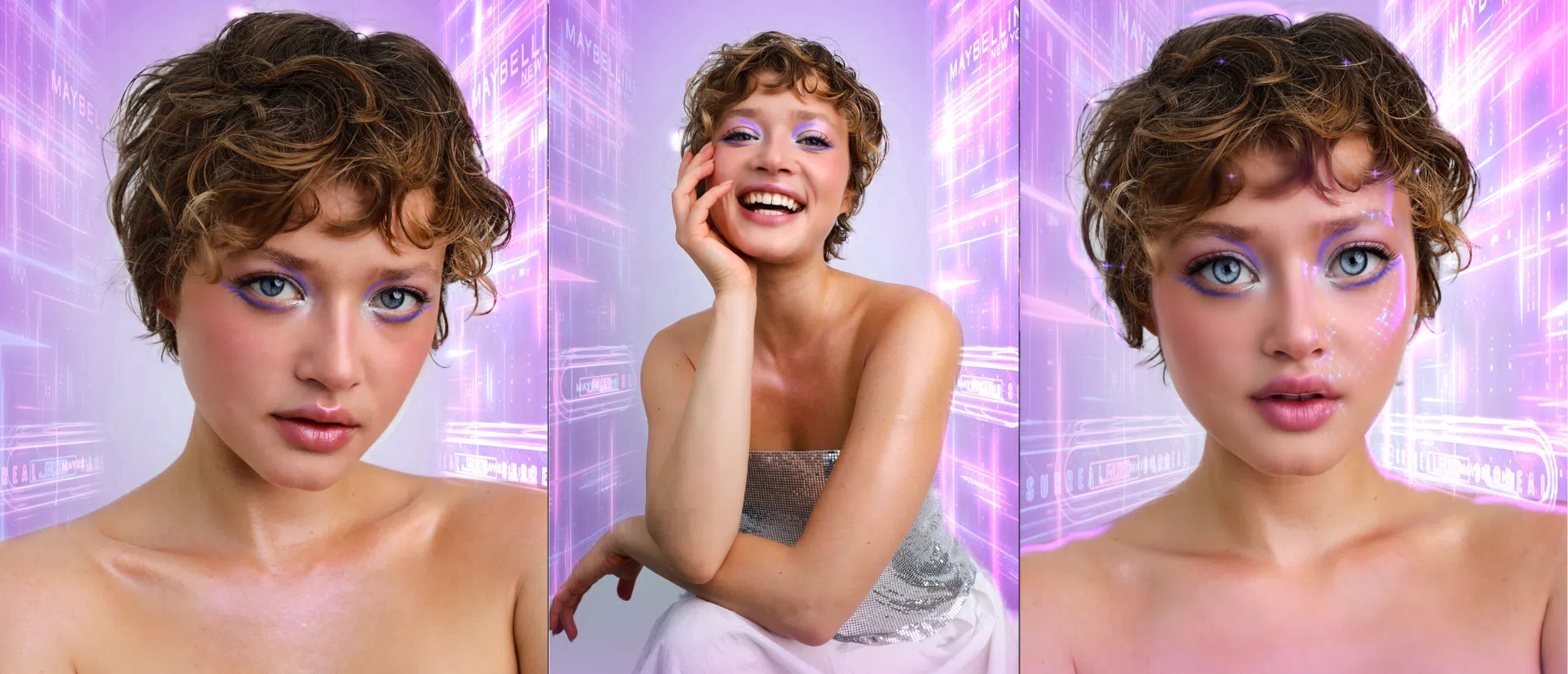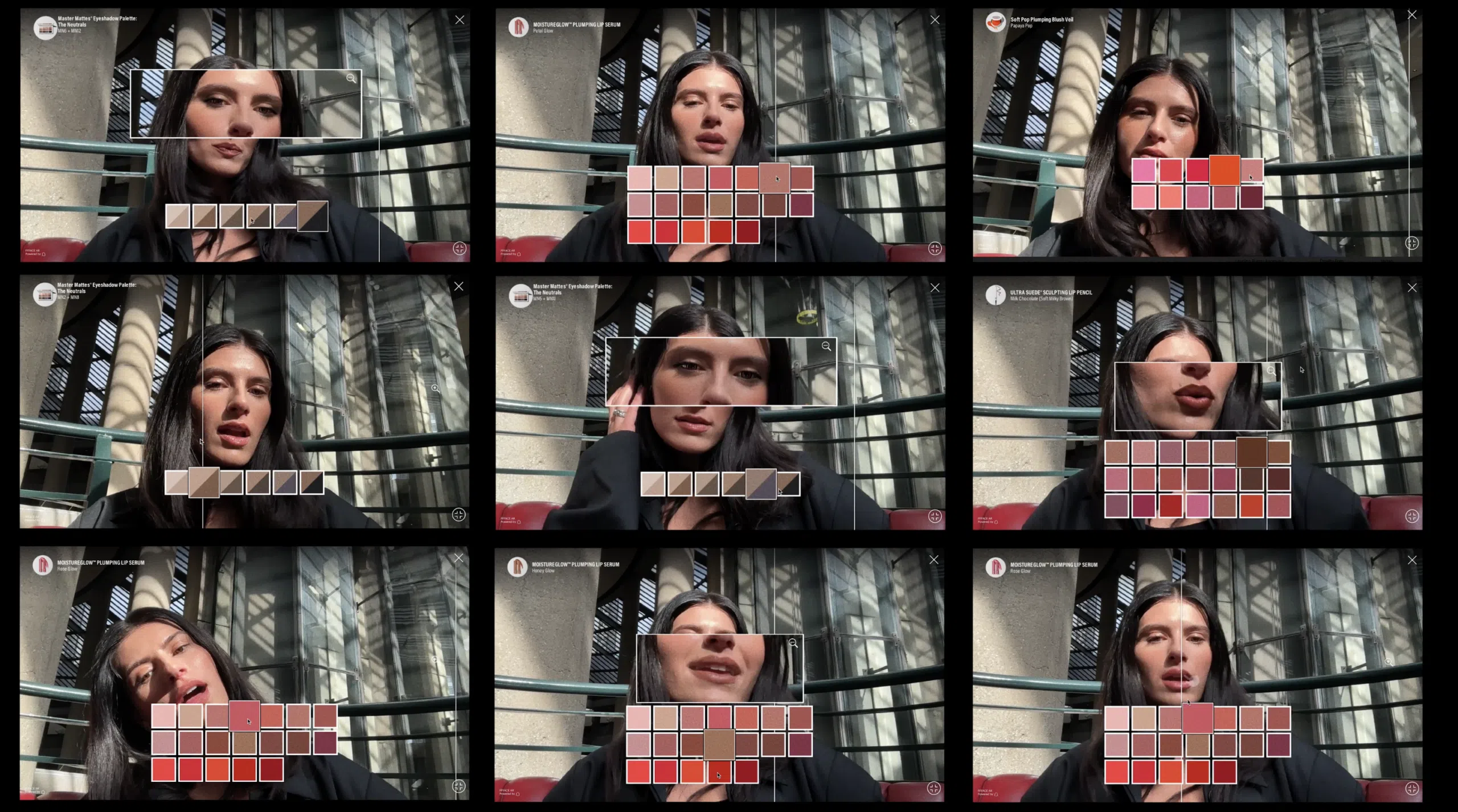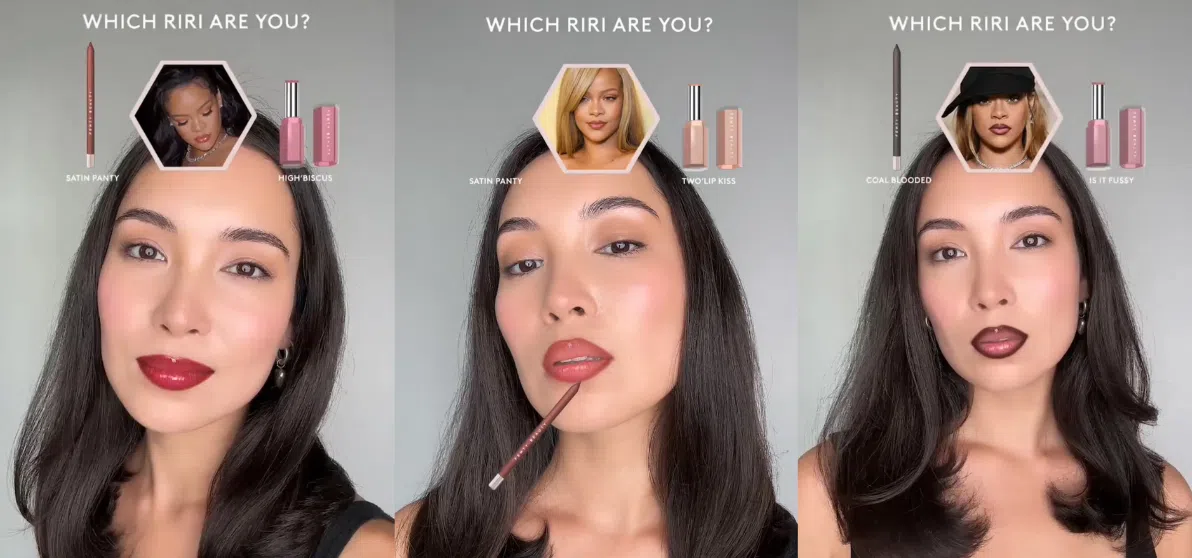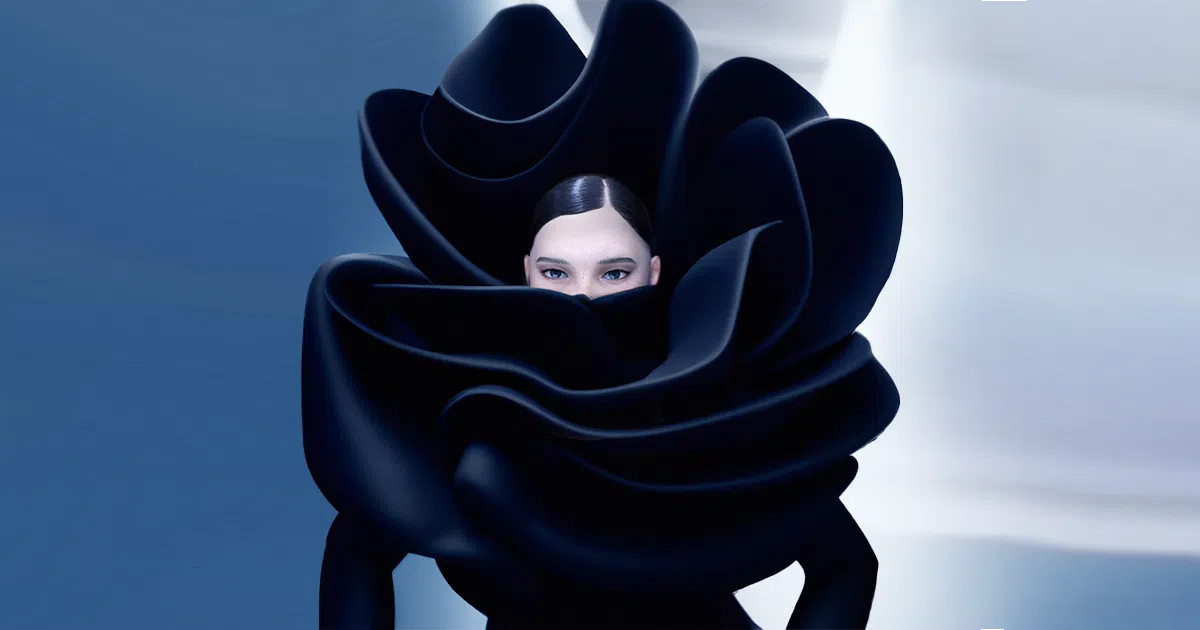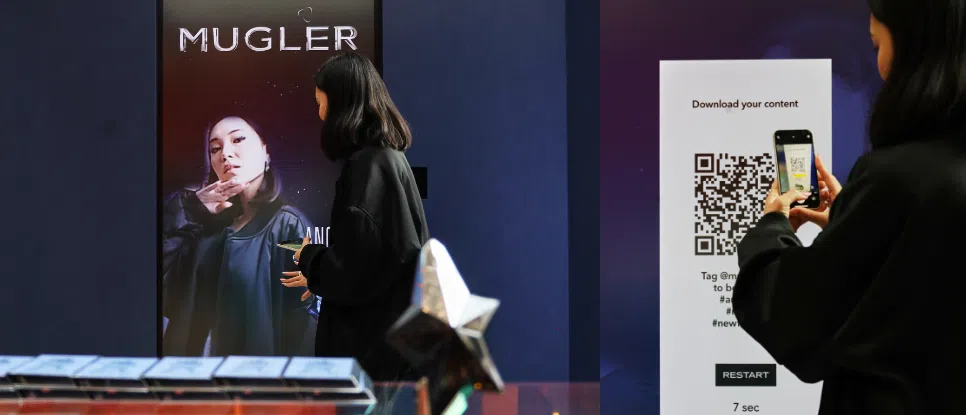AR in the Beauty: How Augmented Reality is Transforming Makeup Industry

TL;DR: AR in Beauty
Augmented Reality (AR) is reshaping the beauty industry by letting consumers virtually try on makeup — from lipstick to foundation — in real time, both online and in stores. Through AR mirrors and social filters, shoppers can find their perfect shades instantly, boosting confidence and cutting hesitation before purchase.
Leading brands like Maybelline, L’Oréal, and Sephora use AR to create interactive, shareable experiences that increase engagement and conversion rates. Powered by AI, these tools also give brands valuable insights into customer preferences, helping them personalize campaigns.
AR has moved beyond novelty — it’s now an essential part of modern beauty retail, merging digital convenience with real-world impact.
What Is Augmented Reality in Beauty?
Augmented Reality in beauty refers to the use of digital overlays to simulate beauty products—like makeup, skincare, or hair color—on a live image of the user. Typically accessed through a smartphone camera, desktop, or smart mirror, AR allows users to see how products look and behave on their own face or body in real time.
AR Adoption in Beauty: Growth, Engagement, and Proven ROI
The adoption of Augmented Reality (AR) in the beauty industry is accelerating rapidly, reshaping both consumer behavior and brand strategies.
- According to Global Market Estimates, the AR and VR market in cosmetics is projected to grow at a CAGR of 25.5% from 2022 to 2027.
- Virtual makeup alone is expected to reach $1.12 billion by 2025, up from $0.91 billion in 2024 (The Business Research Company).
- Consumers are also showing a strong preference for AR-enabled shopping experiences—over 90% of Americans are already using or are interested in using AR while shopping, and 93% of Gen Z shoppers express a desire for AR in beauty retail, especially for virtual try-ons (Arbelle).
- From a performance perspective, brands see significant ROI: AR try-on tools can increase engagement by 10% and drive conversion rates up to 90% higher compared to non-AR experiences (Vogue Business).
- Sephora, for instance, reported a 31% sales increase after integrating AR mirrors into their stores (The Glimpse Group).
These insights illustrate how AR is no longer an experimental trend, but a vital part of digital transformation in the beauty sector.
How is Augmented Reality used in the Field of Beauty?
From virtual try-ons to immersive retail experiences, AR is reshaping how consumers interact with beauty products in several key ways:
AR Beauty Try-On
Virtual try-ons let users test a wide range of beauty products—lipsticks, eyeliners, blushes, highlighters, foundations, and more—on their own face in real time. Powered by advanced facial recognition, machine learning, and real-time rendering, this technology accurately maps facial landmarks such as eyes, lips, skin tone, and bone structure. It then overlays hyper-realistic, 3D cosmetic textures that respond naturally to light, shadow, and movement—creating the illusion of real product applied to skin.
The result is a seamless, app-free experience that mimics an in-store makeover, often accessible through a smartphone browser, e-commerce platform, or smart mirror. Some systems also include gesture recognition or AI-powered shade matching, further enhancing personalization.
This technology removes the uncertainty from buying makeup online, allowing customers to experiment freely and find their perfect match before purchasing. It builds trust, increases user engagement, and helps reduce product returns. Beauty brands like Makeup by Mario, Sephora, L’Oréal, and MAC have all integrated virtual try-ons into their retail ecosystems—and have seen measurable lifts in conversion rates, dwell time, and social media shares as a result.
Launch Virtual Try-On for Your BrandAR Beauty Filters for Social Media
Augmented Reality (AR) beauty filters have become one of the most effective tools for marketing in the beauty industry—especially on platforms like TikTok, Instagram, and Snapchat, where visual storytelling and real-time engagement are key. These filters use real-time facial tracking, 3D asset rendering, and advanced AR scripting to apply digital versions of beauty products—like lipstick, eyeshadow, or blush—directly onto users’ faces through their phone cameras. The technology adjusts to lighting, facial expressions, and even head movement, ensuring the filter feels immersive and natural.
But AR beauty filters are more than just eye-catching effects—they’re powerful engines of product discovery and brand loyalty. By encouraging users to try on products in a fun, gamified way, filters generate authentic user-generated content (UGC) that drives reach and engagement far beyond traditional ads. They also offer subtle calls to action—like links to purchase or shop-the-look buttons—making the path from engagement to conversion smoother than ever.
For example, Fenty Beauty’s viral “Which RiRi Are You?” TikTok filter invited users to discover which iconic Rihanna persona matched their style, while seamlessly showcasing different Fenty lip products. It wasn’t just fun—it was strategic. The campaign resulted in tens of millions of organic impressions and thousands of TikToks, turning everyday fans into active brand advocates. AR filters like this not only amplify brand visibility but also deliver data on which looks perform best, helping marketers fine-tune future campaigns. Ultimately, AR beauty filters combine visual excitement, interactivity, and shareability, making them one of the most impactful digital tools in beauty marketing today.
The “What RiRi Are You?” TikTok filter, created by FFFACE, won the 2025 Webby Awards for Best Use of Filters/Lenses
AR Mirrors in Retail & Pop-Up Activations
AR smart mirrors are revolutionizing in-store beauty experiences by blending the convenience of virtual try-ons with the emotional impact of physical retail. Installed in flagships, malls, and pop-up activations, these interactive mirrors allow shoppers to see how makeup, hair colors, or accessories would look on them—without touching a single product. Using a combination of depth-sensing cameras, facial recognition, and real-time rendering, the mirror maps a user’s face or body and overlays hyper-realistic digital versions of beauty products with impressive precision. The AR responds to natural movements like blinking, smiling, or turning, creating a seamless and lifelike try-on experience.
Beyond product visualization, the value of AR mirrors lies in their ability to attract, engage, and convert. They act as digital storytellers—turning store visits into memorable, shareable moments. Customers are often surprised and delighted, leading to spontaneous social media posts that expand organic reach. AR mirrors also collect valuable data: without capturing personal information, they track engagement metrics such as time spent per product, most-visited shades, or peak interaction hours. This gives brands real-time consumer insights to optimize product displays, staff placement, or even future product development.
Luxury and fashion-forward beauty retailers like Fendi, Prada, Ralph Lauren, and Valentino Beauty have leveraged AR mirrors to stop foot traffic, extend dwell time, and generate buzz both on-site and online. For example, at pop-ups, users can receive printed or digital selfies of their virtual look—turning the experience into a keepsake and marketing asset in one. For retailers, AR mirrors aren’t just a novelty—they’re a powerful bridge between tech-driven personalization and emotionally charged brand interaction.

loook.ai transforms any screen into an AR/AI-powered smart mirror, photobooth, or digital storefront—boosting engagement, foot traffic, and sales
Skin Analysis and Personalized Recommendations
AR tools, when paired with artificial intelligence (AI) and computer vision, are unlocking a new era of hyper-personalized beauty experiences. Using a smartphone or AR mirror camera, these tools scan a user’s face in real time to assess multiple skin parameters—including tone, texture, hydration levels, pore size, oiliness, redness, and the presence of blemishes or fine lines. The analysis is made possible by sophisticated image processing algorithms trained on thousands of diverse skin types, lighting conditions, and facial features. Some systems even offer multi-angle scanning and use machine learning to improve accuracy over time.
Once the scan is complete, the tool generates custom product recommendations, such as the right foundation and concealer shades, targeted skincare routines, and ingredient-specific treatments (e.g., retinol for fine lines, niacinamide for redness, hyaluronic acid for hydration). These suggestions are often ranked by compatibility, and some platforms allow users to see how their skin could improve with continued use—offering a visualized “before and after” preview that boosts confidence in purchasing decisions.
From a consumer standpoint, this feels like having a professional skincare consultant or beauty advisor available anytime, anywhere—without appointments or pressure. For brands, it means increased trust, stronger conversion rates, and higher customer retention, thanks to the personalization and perceived expertise. It also dramatically reduces returns by ensuring customers select products that match their skin’s unique needs.
Major beauty retailers and skincare brands are integrating these AI+AR tools directly into their websites, mobile apps, and smart mirrors—bringing professional-grade diagnostics to the everyday shopper, and transforming skincare from trial-and-error into data-driven self-care.
Hair Color and Style Simulations
Changing hair color—or even hairstyle—is a personal, high-stakes decision. With AR-powered hair simulations, beauty brands now offer customers a risk-free way to explore their options. Using advanced facial and hair mapping technology, AR tools detect the contours of the face, natural hairline, and hair volume in real time. They then render various shades and styles—blondes, brunettes, bold fashion colors, or layered cuts—onto the user’s hair with photorealistic accuracy. Modern AR even accounts for lighting conditions, hair movement, and face shape, ensuring that the simulation looks natural and dynamic as the user moves.
These tools are especially valuable for first-time color changers or anyone hesitant to commit without seeing the result. They allow users to preview a variety of looks instantly, compare shades side by side, and find the best match based on skin tone or style preference. Some platforms also integrate AI to suggest shades that complement individual features, trends, or even seasonal palettes.
Major brands like Revlon, Splat, Garnier, and L’Oréal’s Elseve have integrated hair color try-on experiences into their websites and mobile campaigns, making it easier for consumers to experiment and decide from home. For retailers and salons, AR simulations help convert indecisive shoppers, increase product confidence, and reduce buyer’s remorse—resulting in higher purchase intent, fewer refunds, and more satisfied, loyal customers. By turning a big commitment into a playful, personalized experience, AR has become an essential tool in both online and in-store haircare journeys.
Fragrance Storytelling & Immersive Branding
Fragrance is one of the most emotionally driven and sensorial categories in beauty—but it also poses a unique challenge: scent cannot be transmitted digitally. Augmented Reality bridges that gap by offering immersive, visual experiences that communicate a perfume’s mood, identity, and ingredients without needing a physical spritz.
Through AR-enhanced packaging, smart mirrors, or interactive in-store displays, brands can animate the fragrance pyramid—illustrating the top, heart, and base notes as evolving visual narratives. Think of rose petals swirling around the screen for a floral top note, or smoky amber trails drifting across the viewer’s face to signal warmth and depth. Some AR experiences even include sound design and ambient motion graphics to recreate the environments that inspired the scent—like ocean waves for a marine fragrance, or flickering candlelight for something more intimate and spicy.
This kind of multi-sensory storytelling not only helps consumers imagine how a fragrance feels—it also enhances memorability and emotional engagement. Users don’t just see a product; they step into a mood, a moment, or a lifestyle. It’s experiential branding at its finest.
Fragrance houses and fashion brands such as Dior, Maison Margiela, and Valentino are beginning to explore AR-powered fragrance journeys in pop-ups, packaging, and e-commerce. The result is a more compelling product discovery process, especially for digital-first shoppers who want rich storytelling before committing to a scent. For brands, it turns every fragrance interaction into a shareable, sensory event—and a deeper, longer-lasting customer connection.


Benefits of AR for Beauty Brands
Let’s explore how AR technology delivers concrete value for beauty brands, from boosting sales to enhancing customer experience.
- Higher Engagement & Returns: AR makes product discovery interactive and confidence-boosting, leading to better purchase decisions and fewer returns.
- Personalized Shopping at Scale: AI-powered AR delivers customized experiences to millions simultaneously, turning e-commerce into a digital personal shopper.
- Sustainable Discovery: Digital try-ons replace physical testers and samples, reducing waste and costs while supporting sustainability goals.
Brands that embrace AR signal eco-consciousness and innovation to a growing audience of mindful consumers.
Meeting the Expectations of Digital-First Consumers
Gen Z and Millennials, having grown up in a digital-first world, demonstrate sophisticated understanding of content consumption and creation. These tech-native generations are characterized by their constant mobile device usage, deep appreciation for compelling visual content, and strong desire for genuine brand experiences that align with their values. In their consumer journey, they expect:
- Instant gratification through immediate access to product information, visualization tools, and purchasing options
- Interactive content that enables them to actively participate in brand experiences rather than passively consume information
- Seamless transitions between social media platforms, e-commerce websites, and physical retail spaces, creating a unified shopping experience across all touchpoints
AR technology seamlessly integrates into this digital ecosystem, providing an engaging, efficient, and practical method for product discovery and interaction. By implementing AR solutions, brands effectively reach these consumers in their preferred digital environments – primarily on mobile devices and social media platforms, where they spend significant portions of their daily lives and make many of their purchasing decisions.
Beauty Brands Using Augmented Reality: Real-World Examples
L’Oréal, Makeup by Mario, Sephora, Estée Lauder, MAC Cosmetics, YSL Beauty, and Maybelline are among the top beauty brands leading the way with augmented reality. These companies have integrated AR into their customer journeys to offer virtual makeup try-ons, personalized product recommendations, and immersive in-store experiences. Shoppers can now test lipsticks, foundations, eyeshadows, and more in real time—right from their devices or through smart mirrors in stores. By adopting AR, these brands are enhancing product discovery, boosting shopper confidence, and setting new standards for interactive, digital-first beauty experiences.
Makeup by Mario: AR Try-On at Sephora Times Square
Makeup by Mario brought celebrity glam to life with an immersive AR mirror experience at Sephora Times Square. Shoppers could virtually try on bronzer shades while a video of Mario Dedivanovic himself guided them through application—right on their own reflection. The virtual try-on was impressively realistic, using precise facial tracking to match each shade to the user’s skin tone. This first-of-its-kind AR mirror activation at Sephora blended expert education with personalization, creating a memorable, confidence-boosting shopping moment and elevating the in-store beauty experience.
Maybelline’s Building‑Scale AR Billboard
On a single day in Kyiv at the Gulliver Mall, Maybelline New York debuted the world’s largest AR mirror—the size of a 4,000 m² electronic billboard—projected onto the mall facade. Pedestrians activated the experience through a kiosk and saw themselves try on the new Falsies Surreal Mascara on the giant screen above. The campaign attracted millions of organic impressions and set records for scale in out-of-home advertising. It demonstrated how urban-scale AR can turn passersby into participants, driving brand awareness with both technological novelty and instant engagement.
Valentino Beauty Pop‑Up: Spike Valentino AR Photo Booth
At the Spike Me pop‑up event in Flatiron Plaza, New York (October 4–5, 2024), Valentino Beauty drove immersive engagement through an AR lipstick photo booth activation. Visitors virtually tried on four shades from the Spike Valentino Buttery Matte Lip Color collection via a smart mirror. Each guest received a branded printed photo of their virtual look. Over two days, the campaign delivered 1,579 activations with an average of ~80 photos per hour, fueling emotional connection and shareable moments. The activation drew approximately 1,500 visitors and generated significant social buzz, illustrating how merging AR and physical interaction can elevate luxury brand storytelling.
Final Thoughts: Ready to Embrace AR Beauty?
Augmented Reality is more than a trend—it’s a transformative technology that bridges personalization, sustainability, and digital engagement. Beauty brands that adopt AR today are not just future-proofing their business—they’re reshaping how consumers connect with products.
Want to create immersive AR experiences that captivate, convert, and delight?
FFFACE offers turnkey AR beauty solutions for virtual try-ons, smart mirrors, social filters, and more. Whether you’re launching a new product, hosting an event, or scaling your e-commerce, we’ll help you build beauty that moves.
Let’s create the future of beauty—together



